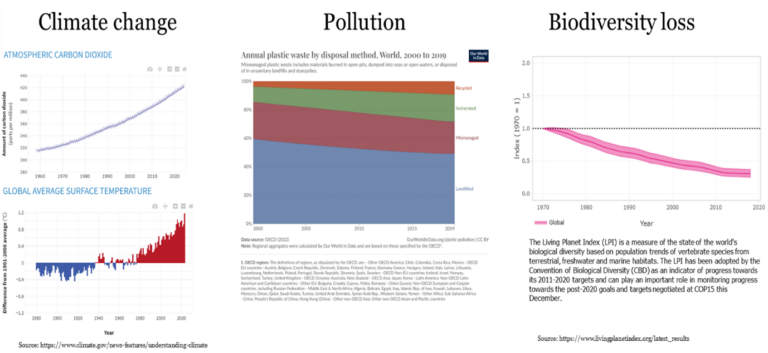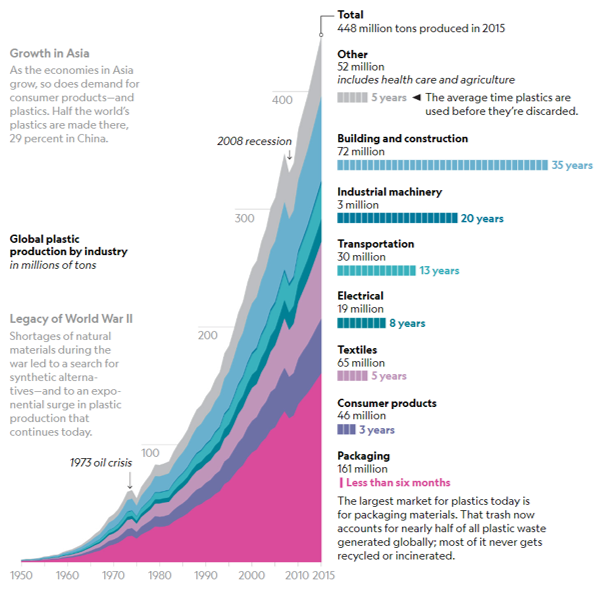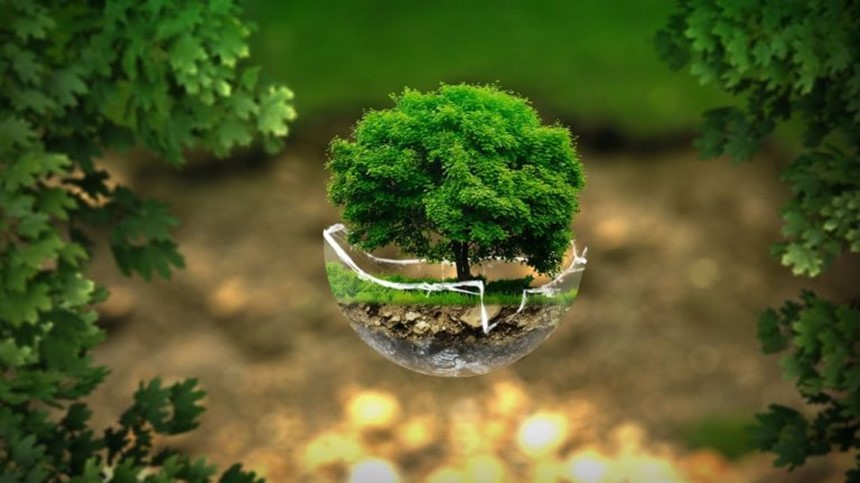Highlights:
- 4R is an open Innovation Ecosystem orchestrated by CLIC Innovation dedicated to solving together in a penta-helix format the Plastic Challenge
- 4Recycling was established in 2019 and has created significant impact through open collaboration and RDI – 58 M€ RDI funding secured to date
- 4Recycling reacts to the evolved operational environment and has now transformed into 4R Innovation Ecosystem
- The new 4R will focus on the same theme as before but zooms into it from an expanded perspective to address systemic challenges of distribution of foods and goods, enabling sustainable consumption of goods, and enabling sustainable housing, transportation and energy infrastructure.
The transition from the 4Recycling ecosystem to the 4R (Refuse, Reduce, Reuse, Recycle) ecosystem marks a significant evolution in CLIC Innovation’s approach to tackle the Plastics Challenge
This renewal not only builds on the successes of the 4Recycling initiative but also expands its scope to embrace higher-level circular strategies. By addressing the systemic challenges of waste and resource management and diving into the root causes of waste generation, the 4R ecosystem promotes a more sustainable and efficient use of resources and paves the way for a sustainable resilient economy.
This news piece explores the journey from 4Recycling to 4R, highlighting past achievements, future expansions, and the business opportunities that arise from this strategic shift.
Achievements of 4Recycling
The 4Recycling ecosystem has been instrumental in addressing the plastics challenge through a multi-faceted approach. The 4Recycling initiative focused on several key areas:
In retail packaging, the development of functional bio-based and circular solutions aimed to reduce waste and improve recyclability. The construction industry took efforts to address the recycling of plastics and composites, including bulky fiber-reinforced plastic products. Furthermore, the initiative enhanced the recycling of industrial side-streams to minimize waste and promote resource efficiency.
More specifically, the development of bio-based materials and chemicals have reduced reliance on fossil fuels and promoted sustainability, key RDI projects developed in the ecosystem include for example Business Finland projects SUSBINCO, COCOBIN, ABiCO, and key EU projects involved in include PROTEUS, BIO-Boost, SuperBark, BIOSWITCH, Value4Pack, Engage4Bio, FRACTION.
Innovations in recycling technologies have improved the efficiency and effectiveness of plastic waste processing, leading to higher recycling rates. Key projects include for example the prepared Business Finland project PLASTin and its continued project Plastics Circularity, EU project TREASoURcE and the active co-implementation of the Helsinki-Uusimaa Circular Hub. Also microplastic related work is done in the new ProWater project (proposal stage).
Plastics and composites in the construction industry and recycling bulky fiber-reinforced plastic products and industrial side streams has been another focus of the 4Recycling ecosystem. Fiber-reinforced (FR) composites, used in applications like wind turbines, pose significant recycling challenges due to their durability and complexity. Recycling FR products is technically challenging due to the complex composition of these materials. Developing effective recycling technologies that can handle the diverse material mixtures found in FR products is a significant hurdle.
By facilitating cooperation across various industries, 4Recycling has created a robust network of stakeholders committed to advancing circular economy principles. CLIC has hosted several different workshops utilising its Open Innovation Ecosystem Playbook ecosystem facilitation tools. Additionally, the ecosystem has established connections with international actors, enhancing knowledge exchange and collaborative efforts on a global scale.
Over 58 M€ worth of RDI funding secured
Since 2019, the 4R ecosystem has achieved several impressive KPIs that highlight its success and impact. Notably, the ecosystem has engaged over 300 organizations of which over 70 have been SMEs, and connected with over 90 international actors, showcasing its extensive collaboration network. The ecosystem has orchestrated over 30 different workshops that have generated new connections and innovative ideas that have further generated into new RDI projects. It has prepared or been involved in preparations of approximately 30 different national and international RDI projects with a total economic volume exceeding 109 million euros. Up to date, 58 M€ of funding has been secured and further 56 M€ are awaiting funding decisions. Additionally, the ecosystem’s website has attracted over 11 900 visitors, indicating strong public interest and engagement. These achievements underscore the ecosystem’s effectiveness in fostering innovation and driving sustainable practices.
Transition to 4R: expanding the scope
The 4R ecosystem is adapting to changing operational environments. New approach is developed based on evolving legislation, public discussions, and advancements in RDI. This ensures the ecosystem remains relevant and effective in addressing emerging challenges and opportunities.
The shift from 4Recycling to 4R represents a broader and even more ambitious approach to circular economy strategies. The already established focus areas will be continued, but in addition new focuses will be established including promoting efficient manufacturing and consumption practices to minimize resource use, refusing unnecessary products and functions to reduce waste generation at the source, extending the lifespan of products through reuse, repair, refurbishment, and repurposing, and continuing to improve recycling technologies to ensure that materials are processed efficiently at the end of their lifecycle. Innovation is at the core of the 4R ecosystem. By fostering cross-sectoral collaboration, the ecosystem accelerates the development and implementation of new technologies and business models. Open innovation environments, such as the 4R ecosystem, break down silos and encourage the exchange of ideas and best practices.
Current state plastics packaging and planetary boundaries
Plastic waste management remains a critical challenge globally. Let’s zoom into packaging as an example of plastics’ application field to examine the current state of circular plastics and the relationship with planetary boundaries.
Plastic packaging waste covers about 40 % of plastic use in the EU and represents about 19 % of all packaging waste generated. 16.1 Mtonnes plastic packaging waste is generated. In 2021, each person in the EU generated on average almost 36 kgs of plastic packaging waste of which approximately 14 kg were recycled. Plastic packaging waste generation has increased, from 2011 to 2021 it has increased 7.6 kg per capita, and just from 2020 to 2021 it has increased 1.4kg per capita.[1]
The current levels of plastic waste collection, recycling, incineration, and landfilling vary significantly across different types of plastics. Nonetheless, they have a common trend: consumption is high and increasing, which increases the amount of waste generated, and furthermore, encompasses still low circularity rates.
Planetary boundaries define the environmental limits within which humanity can safely operate and exist, ensuring the Earth’s systems remain stable and resilient. As we approach or exceed these boundaries, the need to implement higher level circular strategies becomes even more critical.
Why packaging matters?
It’s rather simple. High quantities and short lifespan of packaging make it a critical product group when it comes to the triple planetary crisis at our hands – climate change, pollution and biodiversity loss (Figure 1). More specifically, greenhouse gas (GHG) emissions throughout the lifetime are estimated by OECD[2] to be 1,8 billion tonnes CO2-eq, which is over 3 % of global emissions. Over 99 % of plastics are made from fossil raw materials globally, a significant share of pollution originates from extraction, which is energy intensive and environmentally damaging, e.g. due to oil spills and habitat destruction. Leaked, littered and landfilled plastic waste leaches micro- and nano plastics as well as chemicals into the environment on land and marine polluting the soil, water and air and eventually entering habitats and humans as well. The macro plastics harms wildlife and ecosystems via ingestion and entanglement in plastic debris and litter. [3],[4]

The global plastic production by industry is depicted in Figure 2. Packaging plastics account for the largest share of plastic waste, with significant quantities still ending up in landfills or incinerated, there is also a lack of inadequate recycling infrastructure.

Gaps and opportunities
Achieving even a high level of circularity among plastics requires addressing several gaps. Circular economy principles focus on maximizing the lifetime of materials, reducing the need for new raw materials, and minimizing environmental impact.
Plastics are great materials,
Plastic products are essential in our daily lives, reducing GHG emissions through e.g., lightweight packaging reducing food waste, lighter cars and airplanes reducing fuel consumption, enabling critical functions in healthcare and safety, technology, and infrastructure. And more importantly, plastics are cost-effective, making essential goods and services more accessible and affordable, which is crucial for social equity and improving quality of life for all.
but
More wide-spread attention is needed to design products and systems that minimize waste from the outset, e.g., through refuse, reduce, reuse and repair we can significantly reduce the volume of waste generated. This is essential as municipal waste is projected to increase over 50 % by 2050 globally[1]. By reducing waste and promoting sustainable resource use, these strategies help mitigate the adverse effects on the planet’s climate, ecosystems, and human health.
Improving the collection and sorting of different types of plastics is essential to ensure high-quality recycling streams. Developing advanced recycling technologies to handle complex and mixed plastic waste streams is also crucial. Additionally, creating a robust market for recycled materials is necessary to ensure their economic viability and widespread adoption.
Higher-level circular strategies & systemic change
To establish proper waste hierarchy, higher-level circular strategies such as refuse, reduce, reuse are essential before recycling. These strategies focus on designing products for longevity, reusability, repairability, and at the end, recyclability to reduce waste generation.
Circularity is all about maximum amount of product loops before the maximum amount of material loops
Recycling is the point where no longer the product can be used, repaired or reused, and the new material cycle begins. While recycling is one of the cornerstones of circular economy, the unsustainable and growing rate of consumption needs to be curved.
The 4R ecosystem recognizes that achieving a circular economy requires systemic change. It aims to transform the entire value chain by promoting sustainable practices across all sectors and pushing for more ambitious circularity.
Each and every one is needed
Developing and implementing systemic solutions to initiate systemic change to address systemic challenges is very challenging and complex but also vital. Plastics present a systemic issue that spans across environmental, economic and social dimensions. Addressing systemic challenges requires the involvement of everyone because these issues are deeply interconnected and pervasive across all aspects of society.

The Penta helix approach, which engages stakeholders from business, academia, government, civil society, and finance, is crucial for driving collaborative efforts towards circularity. Businesses can implement circular practices and develop sustainable products. Academia can provide research and innovation to enable safe and efficient reuse, improve recycling technologies and develop bio-based materials. Governments can create policies that support circular economy initiatives and provide funding for projects. Civil society can advocate for sustainable consumption and waste reduction, while financial institutions can invest in circular economy ventures.
This mode of co-development is designed to foster innovation and systemic change by leveraging the strengths and perspectives of each sector. Pooling resources from various sectors can lead to more efficient use of funds, knowledge, and infrastructure. Solutions developed through the Penta helix approach are more likely to gain public acceptance and legitimacy, as they consider the needs and inputs of a broad range of stakeholders. By involving diverse stakeholders, the Penta helix approach ensures that solutions are comprehensive and address multiple dimensions of a problem – as a result, holistic solutions are produced that are more likely to be well adapted and successful.
By leveraging the strengths of each sector, the 4R ecosystem can drive systemic change towards a sustainable and circular future. This collaborative approach ensures that the transition to a circular economy is inclusive, innovative, and effective in addressing the complex challenges of plastic waste and resource management.
Business effects, opportunities and advantages of open innovation ecosystems
The transition from 4Recycling to 4R presents numerous business opportunities to the ecosystem actors. Companies that adopt circular strategies can gain a competitive edge through innovation and sustainability. By adopting circular strategies, companies can drive innovation in product design, manufacturing processes, and business operations. This includes designing products for longevity, repairability, and recyclability, which can reduce costs and improve resource efficiency.
Bold moves, big rewards
Sustainable practices can also enhance brand reputation and customer loyalty, as consumers increasingly prefer environmentally responsible products and companies. In addition, investors and funders are also increasing their requirements to companies for sustainability and impacts in order to secure funding, loans and financing.
Aligning with evolving regulations on waste management and circular economy can enhance business resilience and reputation, which is crucial for business to succeed. Companies that proactively adopt 4R strategies can stay ahead of regulatory requirements, avoiding potential fines and disruptions. Moreover, compliance with these regulations can open access to government incentives and funding for sustainable projects, further supporting business growth.
Open innovation ecosystems, such as 4R, provide a collaborative environment where diverse stakeholders can share knowledge, resources, and expertise. These ecosystems foster innovation by breaking down silos and encouraging cross-sectoral collaboration. They also enable the pooling of resources to tackle complex challenges that no single entity could address alone. By facilitating the exchange of ideas and best practices, open innovation ecosystems accelerate the development and implementation of sustainable solutions.
Conclusion
The renewal of the innovation ecosystem from 4Recycling to 4R marks a significant step towards achieving a circular future. By expanding the focus to include refuse, reduce, and reuse strategies, the 4R ecosystem aims to create a sustainable and resilient economy that operates within planetary boundaries. This systemic change, supported by the Penta helix approach, offers a pathway to a world where waste is minimized, resources are used efficiently, and economic growth is decoupled from environmental impact.

The ecosystem is open for organisations interested in finding new business or in building new competences in circular plastics and bio-based alternatives. Get in touch with CLIC if you are interested to join the 4R ecosystem!
Anna Tenhunen-Lunkka, Head of Circular Economy
anna.tenhunen-lunkka@clicinnovation.fi
Jussi Lahtinen, Ecosystem Lead, Circular bioeconomy
[1] EU packaging waste generation with record increase
[2] How much of global greenhouse gas emissions come from plastics? – Our World in Data
[3] Life-cycle approach & plastic pollution | UNEP
[4] Nations sign up to end global scourge of plastic pollution | UN News
[5] 4 charts to show why adopting a circular economy matters | World Economic Forum (weforum.org)


